White Ser B
RristivojevicВОВЕД forWard
Lorem ipsum dolor sit amet, consectetur adipiscing elit. Maecenas sed libero ut purus mattis adipiscing sit amet id magna. Curabitur accumsan interdum libero, sed commodo purus egestas sed. Vestibulum viverra semper turpis a dictum. Aenean ut mattis ante. Pellentesque euismod sem ut enim bibendum lobortis. Cras ac diam eget ipsum semper varius quis vel mi. Aliquam velit massa, mollis ultricies dapibus ac, euismod nec nibh. Ut quis risus quam, non blandit tellus. Phasellus mattis felis molestie sapien mattis pellentesque.
id arcu. Sed erat arcu, tempor sed porttitor non, elementum quis magna. Nam a magna vel sem dictum condimentum ut eget turpis. Cras sagittis leo id nibh pellentesque tincidunt. Nulla elit sapien, porta ut commodo a, ultrices non sem.
Pellentesque habitant morbi tristique senectus et netus et malesuada fames ac turpis egestas.
Duis malesuada mauris sodales orci interdum sed cursus nunc fringilla. Mauris tincidunt venenatis leo, ullamcorper ornare neque euismod ac. Aliquam bibendum eros sed turpis consectetur interdum.
Lorem ipsum dolor sit amet, consectetur adipiscing elit. Maecenas sed libero ut purus mattis adipiscing sit amet id magna. Curabitur accumsan interdum libero, sed commodo purus egestas sed. Vestibulum viverra semper turpis a dictum. Aenean ut mattis ante. Pellentesque euismod sem ut enim bibendum lobortis. Cras ac diam eget ipsum semper varius quis vel mi. Aliquam velit massa, mollis ultricies dapibus ac, euismod nec nibh. Ut quis risus quam, non blandit tellus. Phasellus mattis felis molestie sapien mattis pellentesque.
Mauris at ipsum eget enim pharetra consequat. Donec ac lorem ipsum. Curabitur id mattis nulla. Pellentesque habitant morbi tristique senectus et netus et malesuada fames ac turpis egestas. Suspendisse arcu tortor, pulvinar id gravida non, gravida sit amet tortor. Aenean auctor hendrerit varius. Aliquam eu arcu eget metus eleifend sagittis. Duis et lacus metus, eget consequat mauris. Donec vehicula consectetur justo, quis lobortis nunc semper at. Donec vel ipsum urna, vel vestibulum metus. Morbi odio nisi, fringilla et mollis non, commodo vel nulla.
Morbi augue eros, lobortis vitae suscipit in, venenatis sed justo. Suspendisse mauris metus, gravida sit amet tincidunt ac, tristique fermentum nisl. Mauris vel lacinia leo. In cursus molestie varius.
Sed porttitor, ante vel luctus tincidunt, nunc enim aliquet velit, vel ultrices mi nunc sed urna. Etiam eget neque eu lorem interdum dapibus. Mauris tortor sem, dapibus sed pharetra dignissim, tempor nec libero.
Sed ac molestie lorem. Pellentesque sit amet bibendum nisl. Sed tempus diam in mi tristique a dictum tellus feugiat. Nullam eu libero vitae mauris tristique convallis. Cras dolor elit, placerat quis imperdiet nec, auctor suscipit odio. Vestibulum euismod, nisl adipiscing ultrices tristique, nisl turpis imperdiet nunc, sed mattis neque ligula
Cum sociis natoque penatibus et magnis dis parturient montes, nascetur ridiculus mus. Vestibulum in nunc tellus. Donec scelerisque, sapien eget sollicitudin semper, tortor lacus bibendum libero, sed tincidunt nisi ante vitae risus.
Nulla tincidunt, arcu quis sodales condimentum, metus enim pharetra justo, sed blandit lectus purus nec libero. Sed tincidunt semper massa, sit amet
Елиза Шулевска, директор
Mauris at ipsum eget enim pharetra consequat. Donec ac lorem ipsum. Curabitur id mattis nulla. Pellentesque habitant morbi tristique senectus et netus et malesuada fames ac turpis egestas. Suspendisse arcu tortor, pulvinar id gravida non, gravida sit amet tortor. Aenean auctor hendrerit varius. Aliquam eu arcu eget metus eleifend sagittis. Duis et lacus metus, eget consequat mauris. Donec vehicula consectetur justo, quis lobortis nunc semper at. Donec vel ipsum urna, vel vestibulum metus. Morbi odio nisi, fringilla et mollis non, commodo vel nulla.
id arcu. Sed erat arcu, tempor sed porttitor non, elementum quis magna. Nam a magna vel sem dictum condimentum ut eget turpis. Cras sagittis leo id nibh pellentesque tincidunt. Nulla elit sapien, porta ut commodo a, ultrices non sem.
Pellentesque habitant morbi tristique senectus et netus et malesuada fames ac turpis egestas. Duis malesuada mauris sodales orci interdum sed cursus nunc fringilla. Mauris tincidunt venenatis leo, ullamcorper ornare neque euismod ac. Aliquam bibendum eros sed turpis consectetur interdum. Morbi augue eros, lobortis vitae suscipit in, venenatis sed justo. Suspendisse mauris metus, gravida sit amet tincidunt ac, tristique fermentum nisl. Mauris vel lacinia leo. In cursus molestie varius.
Sed porttitor, ante vel luctus tincidunt, nunc enim aliquet velit, vel ultrices mi nunc sed urna. Etiam eget neque eu lorem interdum dapibus. Mauris tortor sem, dapibus sed pharetra dignissim, tempor nec libero.
Sed ac molestie lorem. Pellentesque sit amet bibendum nisl. Sed tempus diam in mi tristique a dictum tellus feugiat. Nullam eu libero vitae mauris tristique convallis. Cras dolor elit, placerat quis imperdiet nec, auctor suscipit odio. Vestibulum euismod, nisl adipiscing ultrices tristique, nisl turpis imperdiet nunc, sed mattis neque ligula
Cum sociis natoque penatibus et magnis dis parturient montes, nascetur ridiculus mus. Vestibulum in nunc tellus. Donec scelerisque, sapien eget sollicitudin semper, tortor lacus bibendum libero, sed tincidunt nisi ante vitae risus. Nulla tincidunt, arcu quis sodales condimentum, metus enim pharetra justo, sed blandit lectus purus nec libero. Sed tincidunt semper massa, sit amet


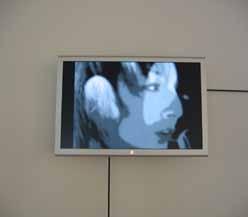



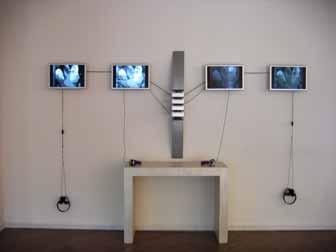




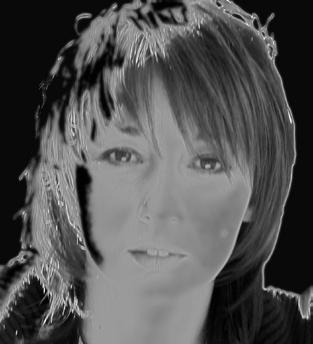





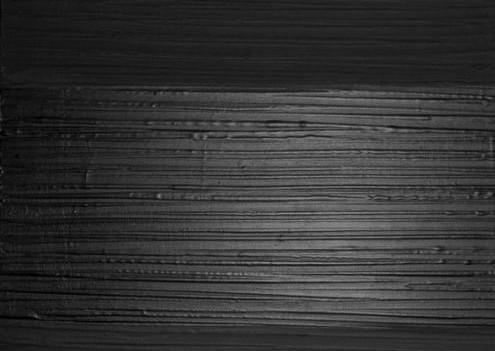
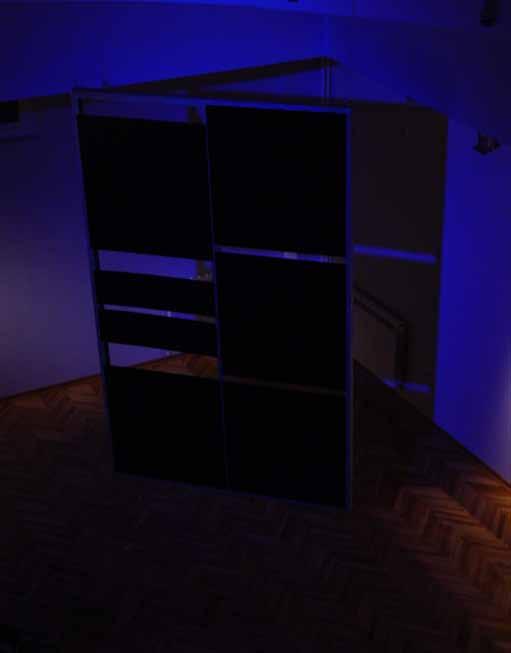

 Zeljka Mo M irov
Zeljka Mo M irov
Born 1962 in Novi Sad. Graduate (1987) and postgraduate (1993) at University of Arts in Belgrade – Faculty of Applied Arts, sculpture in space and architecture. Worked as a professor in the Academy of Fine Arts in Pristina (1993 –1995) and in the Academy of Fine Arts in Belgrade (2001 –2006). Since 2008. she works as art director in Block Gallery in Belgrade.
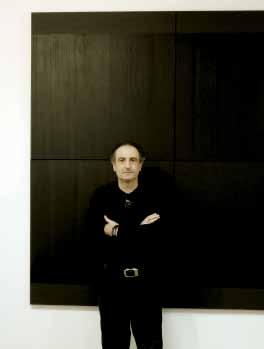
Solo exhibition: Belgrade – 1987, 1988, 1989, 1991, 1993, 1996,1999, 2001, 2002, 2006; Ulcin – 1988; Tivat – 1988; Bar – 1988, 1990; Vrbas – 1988; Zadar – 1989; Kovin –1990, 2004; Zemun – 1991; Zrenjanin – 1992, 1997; Kikinda – 1992; Krusevac – 1997; Nis – 1998; Gorni Milanovac –1998; Kraguevac – 1998; Apatin – 2001; Smederevo – 2003; Los Angeles – 2003; San Pedro – 2003, 2004: Kraljevo –2004; Novi Sad – 2005; Sabac – 2005; Uzice – 2006.
vla D i M ir ri ST ivojevi C
Born in Loznica, 1953. Graduated at the Academy of the Fine Arts in Sarajevo, Department of Graphics, 1979. Member of ULUH (Croatian Association of Fine Artists), Split 1984 –1992, and ZUH (Croatian Union Artists) 1988 -1992. Member of ULUS (Serbian Association of Fine Artists) since 1992. Lives and works in Belgrade, Serbia, as an independent artist.
Solo exhibitions: Loznica – 1984; Split – 1987; Hedikhuizen – 1992; Belgrade - 1994, 1998, 2006, 2007, 2008; Pozarevac – 1995.
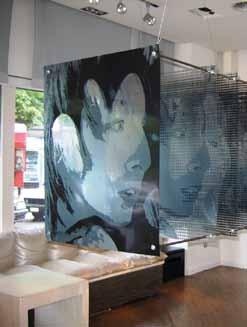
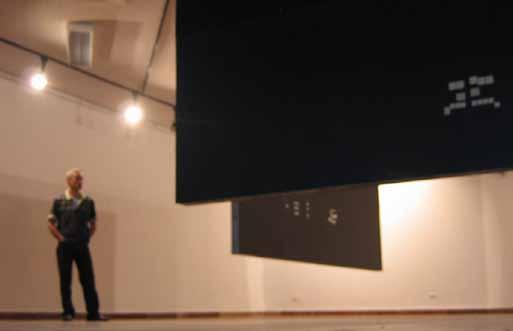
l jubo M ir v u C ini C
Born 1956. in Novi Sad. Graduated (1982) and postgraduate of graphic (2002) at the Academy of Arts in Novi Sad. Worked as editor of Art program at the Cultural Center of Novi Sad, as well as art editor ‹Polja’. Member of artistic board INFANT (International Festival of Alternative and New Theatre). Lives and works as a assistant professor (2005) at the Academy of Arts in Novi Sad, Srbia.
Solo exhibitions: Belgrade - 1982, 1987, 1990, 2006, 2008, 2010; Novi Sad - 1983, 1990, 2002, 2003, 2006, 2007, 2008; Kikinda – 1986; Apatin – 1990; Pancevo – 2004; Subotica – 2004; Nis – 2004; Zrenjanin – 2005.
ON black & white
We perceive the exhibition Black & White Serbia and we try to understand and relate this expression to the recent events on the particular artistic scene. This is why the offered concept of the three artists necessarily became a challenge, related to the initial encounter with the long list of events or with the relevant Serbian current art production. The spectrum of concepts incorporated into the project B & W S offer the basic challenges, most of all, of respecting the inclination towards certain Modern components. The rendered visual situations also provided the balance with the current moment, sufficient to be manipulated with, but with a limited intensity. It retrogradely addresses the Postmodern spirit to register these occurrences. It is more

difficult to note the final status of the artworks, but the flexible attitude towards defining of this array of plastic relations approach the desired definition of the offered presentation. Its actors chiefly want to retain the pictorial aspect of the occurrence which is further on dimensioned as a particular objectivity of the show, occasionally rendered as gestalt. This attitude towards art results in numerous implications which together compose the platform they proceed from: forms of abstract art varied in the age of Postmodernism which means a direction towards the actual plastic reality (the inner instance alternatives and equal to the subjective revelations). Their system of attitudes is actually related to the intention of creating a composition game by using relatively identical
elements in the role of constructing the mental system related to composing of relatively acceptable wholes. The final optical effect shows a tendency to secure an equalized, integrative impression of the sight. This is why it can be defined only within the separately conceived groups of pictures or objects, or concurrently occur as a substitute of the black & white or plastic & relief attitude towards the particular artwork. The absurdity of the concept seems real at first sight, but the further analysis shows moments that semantically change the particular occurrence of the offered works. Some of them are with “transparent resolution” of the digitalized prints and recognizable contents. The others are combined on the wall surface into a series of black paintings
(from two to four), with a shallow relief facture. The third ones are black encased paintings with several white collage miniature accents, works that function in the free space - a plastic feature that continues to exist as an installation. The end is, however, under the monochromatic sign which is related to an intuitive factor of globalizing of the phenomena in the art, where the local is erased (although the idea of this project is contained in he title, yet it is not directly explained). It is discerned only from some background reflections of the artists (more precisely, with the short explication of Ž. Momirov): “The project Black & White Serbia is conceived by a group of artists with the intention to turn the synergy rendered from personal sensibilities into a united picture

whose general visibility speaks about the feelings proceeded from the general condition through a personal viewpoint. The personal views of the recent active and verified artists in themselves possess meaning and established quality, but what separates this project from the usual expositions is the form of collaborative action where the individual does not lose its significance, but integrates it into a conceived total which polyphonically and harmonically influences the perception on a higher social level. The artists themselves are aware that they are conceptually integrated into a group arrangement with their visions-feelings which present their feelings with a juxtaposition for reading of their personal statements. The project is shifted in relation to the usual positions within the medium dimensions and is open towards the medium fusions and the new interpretations of the stable conventions, positioned in the new currents of the contemporaneity, interpreted through the viewpoints of the general interaction. The differences initiated by the project B & W S are aimed towards the form of research that follows the creative principles and the attempts whose final products are not only artifacts but also evidence of the positions within a time frame. The methods used by each of the artists are subjective, almost singular, and are presented in the varieties of the artistic disciplines.”
We are here encountering situations where the efforts of the artists reach the level of marginalization of the positions with a wider analytical spectrum related to the crucial segmented meanings. In a certain way they destabilize their solutions and, to a smaller extent, also the critical reviews on them.
The safest way is to analyze their formal anachronous visual idiom. Although it has become a commonplace, which is the first impression on this exhibition, there are, however, other interpretations. They are already elaborated in the experiences of many artists in the world who have used and are still working in monochrome. The examples are a real component of a particular course of these directions with an emphasis on the concurrent experiencing of the ambient and the individual analyzing and incorporating of the additional changes in the process of painting, adapted to the black background of the canvas or during the ambient fitting of the artworks.
The detour in this part of the text was necessary so that we bring to mind the fact that the position of their works is related to the real moment of their living. At first sight unburdened by the possible speculations with the moments related to the two decades long nightmare, the three artists from Serbia persistently make artworks in the spirit of the Modernism which has been officially “absent” for four decades. With them the esthetic aspect is perhaps a priority in the sense of respecting the art “products” hued monochromatically (the black-white contrast) or the minimalism with strictly accepted modifications. But where did they unite when searching for the conceptual context related to the installation. It is supposed that they both individually and parallelly fit into the conception and setting of the artwork in the particularly chosen ambient. The Museum of Contemporary Art is faced with the responsibility to provide a large surface for a real display of the concepts of these artists. Although in a reduced form, the chance of an ideal
picture of the project is intuitively announced because it offers more presentation variations. The artists even have their own confirmation of the solutions adapted to the showrooms, like the example with the art pavilion “Cvijeta Zuzorić” and other official or alternative showrooms.
Further on, it is important whether they would maintain the compactness of their considerations. It is confirmed that in these postmodern turbulences it is possible to change the method of uniting of the visual entities related to the prevalence of the black, less black-white (which is part of the title and, actually, prefers a sufficient level of irony which is supposed to be the sign of the exhibition). Are we revealing the initial observations of he display? Without reading the title, it will in itself take us to different waters which is already present in the so far published reactions in the texts about them. Considering the array of the mentioned formalistic viewpoints, what remains is to find the deep concepts of the individual projects. With each of them we can determine directions with the positioning of the artworks with close clauses. The dark and the light are clear indicators of the imagined particular states. The intimate can not be completely eliminated although it is essential to retain the connection with the features that have emphasized universal reflection.
This is why the narrative in the Serbian art of the 1990s initiated the experiencing of the different. The return to the minimalism, that is, the monochrome idiom, is a significant factor for partially changed attitude towards this artistic mood. It was these few who confirmed the continuity of the existence of the modernistic qualities where the esthetic dimension took over the responsibility in the new social constellations. The references sublimed like this possess their own parallelism because they are a powerful weapon for overcoming the crisis, understood as a creative constituent with expanded views. Therefore, this project represents its own multi-layered aspect which might have, and has multiple experiencing as an event.
Short comments on each of them could result in different notes due to the independent engagement of each of them. Željka Momirov (she initiated the realization of this exhibition) as an individual can offer a relatively rich and diverse opus. She practices the relation of the fictive
black-white and focuses on the objective where she clearly quotes familiar pictures or symbols. Her narration is without pronounced ideological background. She rather faces the intimate challenges of sculptural character. Her selfportrait or portrait is often on the level of multiplied visual impression, applied on transparent surfaces, upon which she coats one toned color. She considers them as drawings in space.
“Almost without exception the works of this artist are not made of only one piece, so they are not single objects, but complex entities composed of two equal and complementary elements or often of a number of identical or very similar elements which are included in particular series exactly as much as is required by the basic idea which drives the laws of formation of such a work. Therefore, most of these works count either on wall or on floor surfaces... thanks to the intrusions and the role of the light between the notches of the modular structure which is thus modified into a work with changeable visual situations or on other occasion by introducing regular abstract geometric structures of the surprising objective motif of a rose as a symbol of multiple or multi-meaning denotations, and not only by the existing, codified codices and connotations, but also by quite subjective and intimate needs of the artist herself.” (Ješa Denegri, in the preface to the catalogue, 2006). The other two artists use the black as a real basic segment in composing a cultivated monumental sight.
Vladimir Ristivojević is inclined to replicate Ad Reinhardt (that is, he intents to reconstruct, to remind of his historical display - the 1966 installation in New York) - the black background shapes his works which extend the sight as a group. In that sense, Ješa Denegri (in the preface to the catalogue, 2009) unites and defines these experiences: “So, to paint today and here black monochromes means that it implies two basic facts: it means to respect the tradition of Modernism proceeding from the historical abstraction through the post-war painting on the battle fields all the way to the Minimalism... The painting with mental and conceptual features like the one practiced by Vladimir Ristivojević is today a rare and exclusive artistic discipline. This painting proves to be a deliberately based position


defending the complete autonomy of the art in the context “the art in the time of bio-politics” and “the art in the time of the mass media”. But when in extremely minor position, the painting of these self-reflective features suddenly acquires the strength of subversion in respect of the major contemporary art practices. It is this subversiveness that actually composes the active cultural and social role of the pure mental and visual painting of the contemporaneity.”
Close to him is Ljubomir Vučinić, but his idiom is supplemented by creative action which is meant to change the character of the painting which continues to live on the wall as a reflection of the additional light effects rendering the shadow of the object, that is, a picture showing on the wall surface. He explains: “...The installations in the galleries or in the open are meant to redefine the spatial corpus into a new sight with additional cognitive moments. The system of the composite structures is established as an efficient artistic
method in creating the objects fusing them into pictorial modules and technical constructive elements...”
Their contact with the visions of Robert Reinman and Ad Reinhardt, and before that with those of the Russian avantgarde when the black-white, the black or the white had the function of reaction, introduce us into the generally accepted references with multiple meanings in the art. What is important for us is that they hide in themselves the intention for noting the historical-political turbulences. They often play with the survival of certain situations as a particular consequence of the drastic changes. The three artists are in an almost identical system of experiencing the changes during the 1990s and the beginning of the new millennium.
The reactions to the recent events are somehow softened in their approach to the artwork. Accepted and interpreted, they are rather a part of a state of an esthetis-ambient attitude of fragmented views, at one instance united in order

to send the “message” that they are released of any kind of pressures and that they concentrate on individual conceiving of general views and processed mastering of the pictorial aspect of the arranged ambient. The activity of these artists or the presence of their works in a particular environment tends to continue the idea of the modern attitude towards the actuality - an attitude that supposes that a particular tradition (in this case, it is the tradition of modernity) is

to be approached in the same way that tradition tends to function. This is the function as a critique - a critique of the predecessors and a critique of the contemporaries.
This is only one of the possible variants to show relatively different views on the art, put together on one topic and incorporated into a unique, connected whole.
Marika Bocvarova PlavevskaИздавач: ну Музеј на современата уметност, скопје, република Македонија
За издавачот: елиза Шулевска, директор
Вовед: елиза Шулевска
Tекст: Марика бочварова Плавевска
Организација на изложбата: Марика бочварова Плавевска, ива Петрова, благоја варошанец
Превод на англиски: Маја Хаџимитрова иванова (текстови)
Дизајн: Михајло Мотески Печатница: Принтцентар, скопје Тираж: 500
Editor: ni Museum of Contemporary art, Skopje, republic of Macedonia
Editor in Chief: eliza Shulevska, director
Forward: eliza Shulevska
Теxt: Marika bocvarova Plavevska
Organization of the exhibition: Marika bocvarova Plavevska, iva Petrova, blagoja varoshanec
Translated into English: Maja Hadjimitrova ivanova (texts)
Design: Mihajlo Moteski
Printed by: Printcentar, Skopje 500 copies
